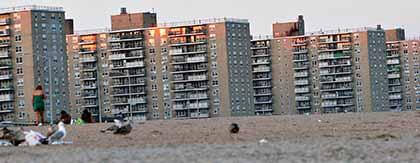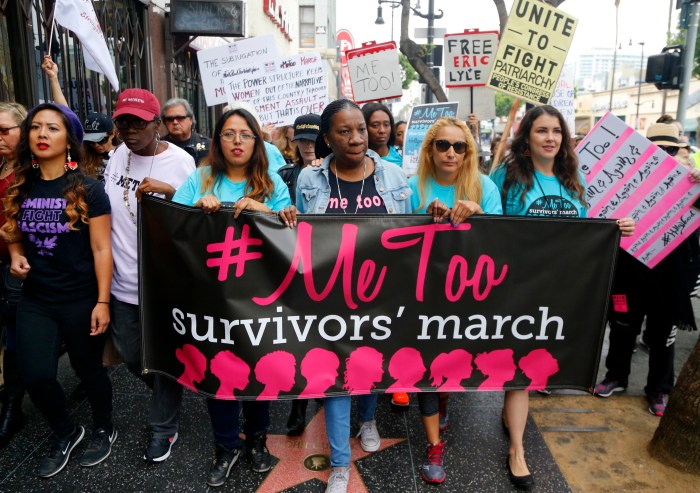By Philip Newman
New Yorkers are living longer than average Americans. Bayside has the city’s lowest death rate and more than 88 percent of births in Elmhurst and Corona were to foreign-born women.
The city Department of Health said the life span for New Yorkers at 79.4 years for men and 82 years for women is more than a year longer than the national average.
The Health Department imparts these and other exhaustive statistics in its 112-page annual report “Summary of Vital Statistics.”
The 52,881 deaths recorded in New York City in 2009 — the most recent year for which statistics are available — were the fewest since the department began keeping statistics in 1900 and at a time the city is growing.
Dr. Thomas Farley, the city health commissioner, has in the past recommended that New Yorkers get more exercise but did not comment in the report on whether New York City’s lengthening life span is directly connected to walking.
But the Health Department estimates that less than half of adult New Yorkers get recommended levels of physical activity. Furthermore, the agency said walking among New Yorkers tends to take place overwhelmingly in Manhattan.
“New Yorkers are living longer, healthier lives than ever before,” Farley said. “This report gives us much to be proud of. But it also highlights continuing challenges. Thirty percent of last year’s deaths occurred in people younger than 65, many of which could have been prevented. As we celebrate the progress we’ve made, we should commit ourselves to fighting preventable illness both as individuals and as a community.”
Two of the city’s three leading causes of death — heart disease and influenza/pneumonia — claimed fewer lives in 2009 as did all five leading causes of premature death. Cancer deaths rose slightly.
The 12,212 deaths in Queens were the most in any borough after Brooklyn, which had 15,790. Deaths totaled 8,666 in the Bronx, 9,868 in Manhattan and 3,764 in Staten Island.
Queens led the city in deaths from stomach cancer, meningitis, aortic aneurysm, chronic lower respiratory disease, accidental poisoning by psychoactive substances, motor vehicle accidents and accidental falls.
But Queens recorded a decrease in deaths from emphysema, pregnancy, childbirth and puerperium, complications of medical and surgical care, kidney cancer and Alzheimer’s disease.
Besides Bayside, Rego Park/Forest Hills, Sunnyside/Woodside, Queens Village, Flushing, Fresh Meadows, Briarwood and Woodhaven had some of the city’s lowest death rates.
But the Rockaways, along with Central Harlem, Morrisania in the Bronx and Brownsville in Brooklyn, were among high death rate areas.
A total of 44 percent of births in New York City were to unmarried women, with 44.7 percent in Queens.
Childbirth among teenagers decreased with some of the lowest rates in Rego Park, Forest Hills and Bayside.
More than half of all births in New York City were to foreign-born women, with 69.3 percent in Queens. The figure was 88.2 percent in Elmhurst and Corona, 83.8 percent in Jackson Heights, 82.7 percent in Flushing, and 77.5 percent in Sunnyside/Woodside.
New York City’s infant mortality rate fell, although Jamaica/St. Albans and Fresh Meadows had among the higher rates.
The Health Department said homicides had fallen more than 78 percent citywide since 1990 when 2,272 homicides were recorded. There were 496 in 2009.
The Rockaways had the city’s highest death rate from heart disease. The lowest rates were in Jackson Heights, Elmhurst/Corona, Bayside and Sunnyside/Woodside.
The Rockaways were among community districts with the highest cancer death rates. Some of the lowest rates were in Elmhurst/Corona, Rego Park/Forest Hills, Queens Village, Jackson Heights, Sunnyside/Woodside, Flushing and Woodhaven.
“For the first time since the [HIV] epidemic took off in the early 1980s, the total number of deaths from HIV fell below 1,000 to 933 from 1,073 in 2008,” the report said.
The Health Department said smoking caused around 7,200 deaths citywide, 400 fewer than in the previous report and 1,500 fewer than in 2002. The agency said the decline in smoking had saved about 6,300 lives since 2002.
Deaths from influenza/pneumonia fell slightly from 2,300 to 2,278. People 65 and older account for nearly 90 percent of flu and pneumonia deaths, officials said.
Long Island Jewish Medical Center delivered the most babies in Queens at 5,115, followed by New York Hospital Medical Center of Queens with 4,001. The hospital with the most births citywide was Maimonides Medical Center in Brooklyn with 7,742. Home was where 59 Queens babies were born.
The Health Department said the most popular names for boy babies were Jayden, Daniel, Ethan, Michael, David, Justin, Matthew, Joshua, Alexander and Christopher. For girls it was Isabella, Sophia, Mia, Emily, Olivia, Madison, Sarah and Ashley.
Reach contributing writer Philip Newman by e-mail at timesledgernews@cnglocal.com or phone at 718-260-4536.

































